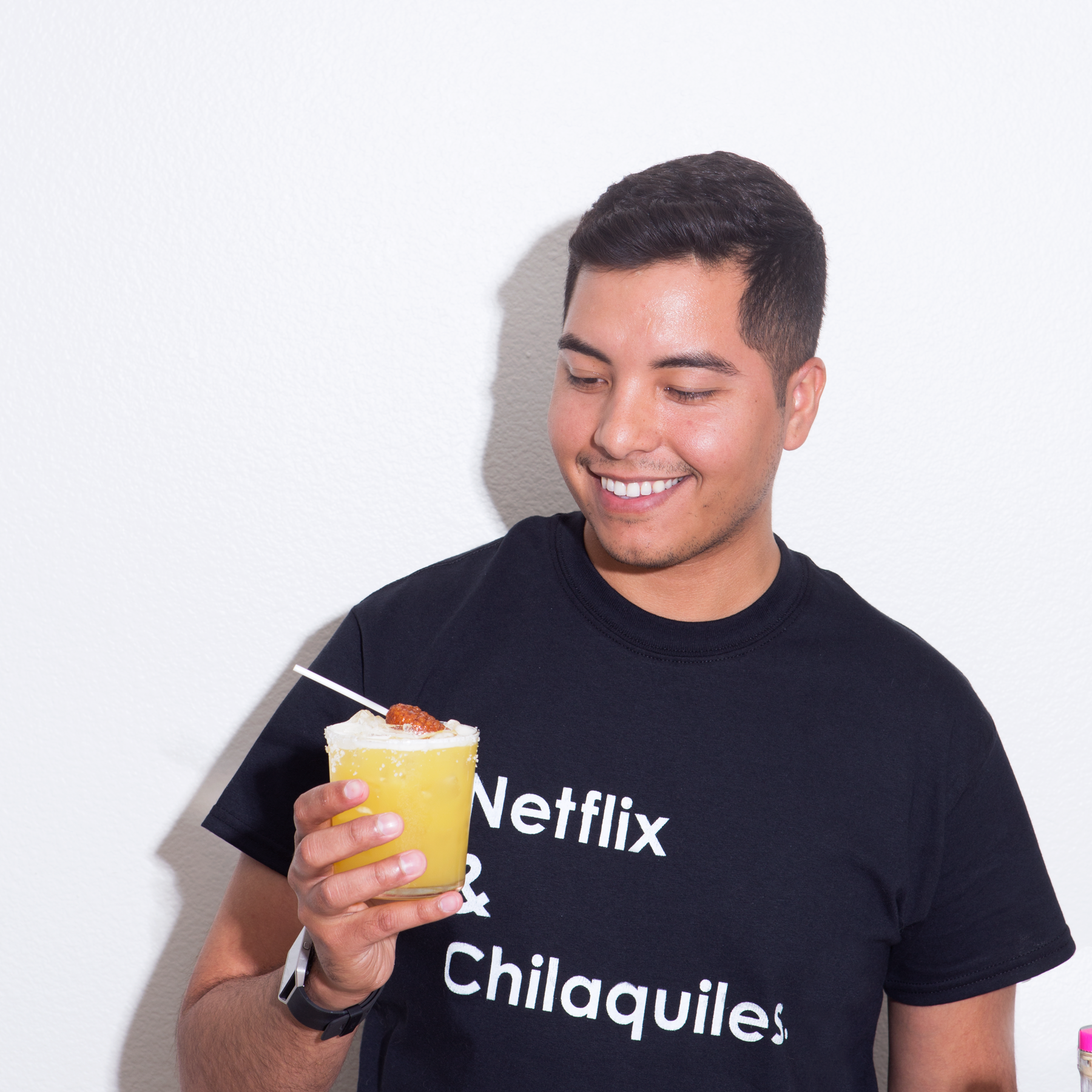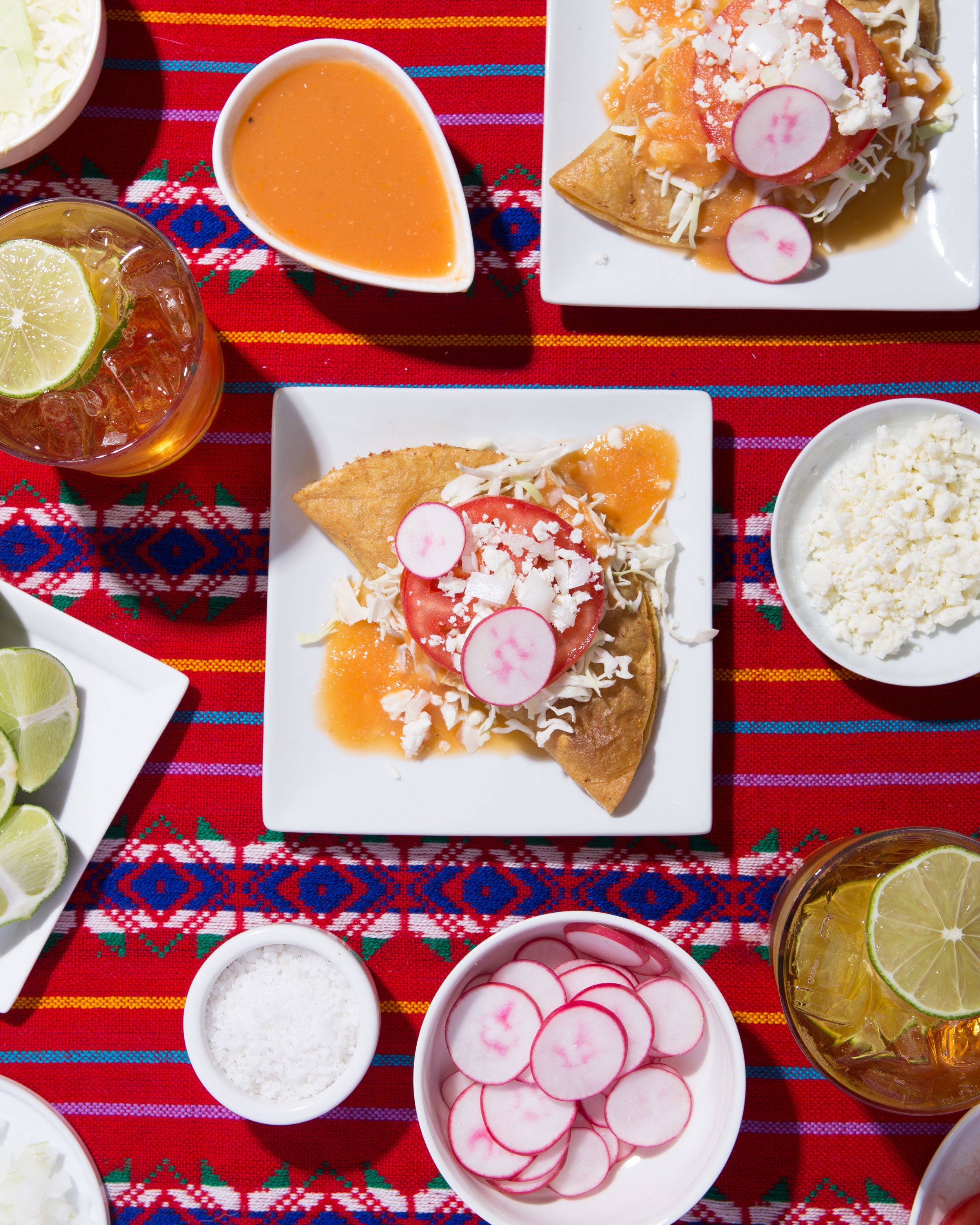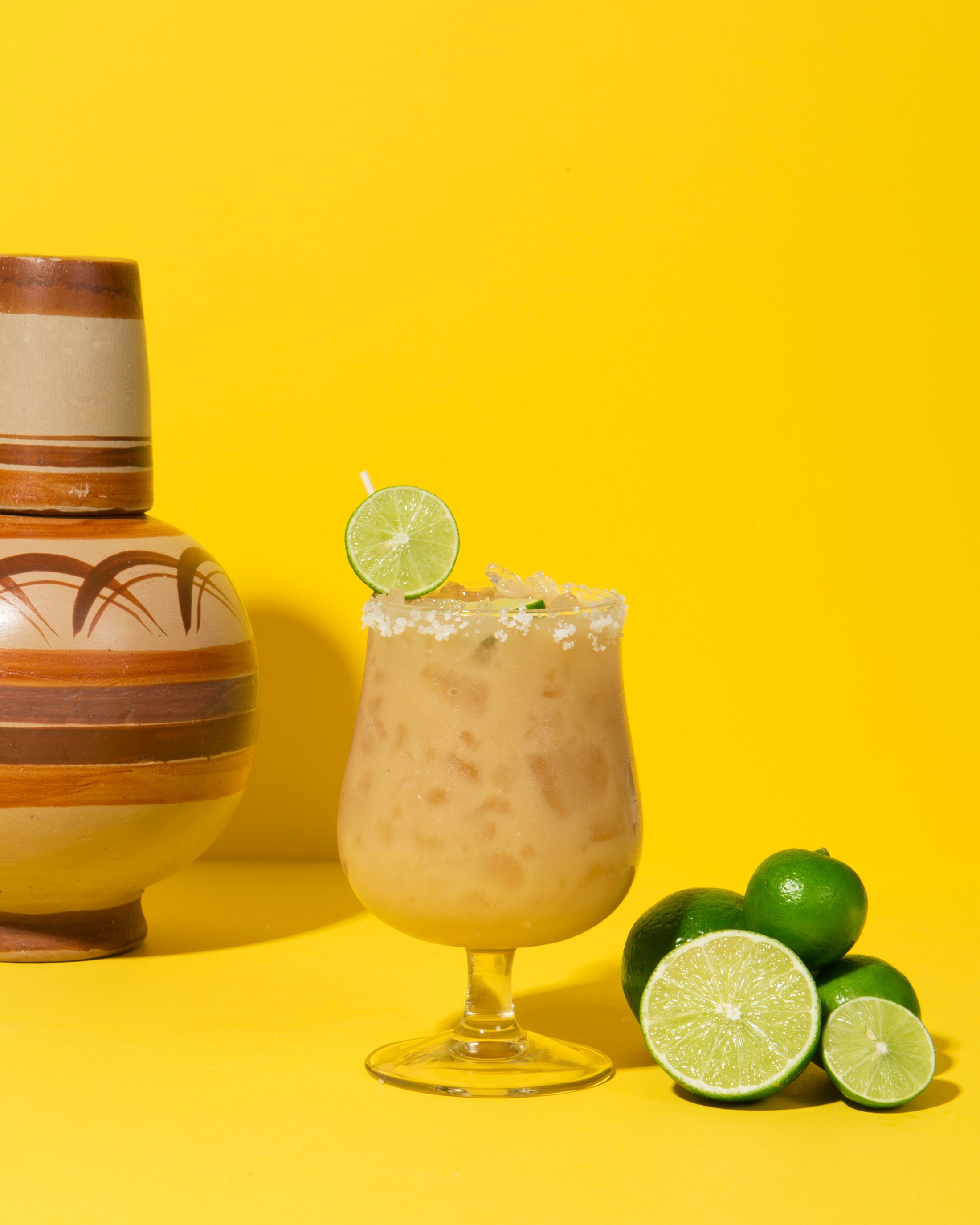
Esteban Castillo is the chingonx blogger behind Chicano Eats — a food blog dedicated to connecting people with food, delicious recipes, and his personal experiences as a queer Chicano.
The 27-year-old started Chicano Eats in October of 2016 and has since garnered a loyal audience, pushing 30,000 Instagram followers. His blog features stylistic food photography, textures and vibrant colors that evoke a sense of happiness and unapologetic Latinx pride.
 “When it comes to Mexican cuisine, you always see the same romanticized, rustic and indigenous food styled photos — it’s old,” he says. “I didn’t want to do that with Mexican food.” As an alternative to the cishet in food journalism, his images incorporate abstract colors, concentrating on the ingredients being presented — capturing not just the food, but the culture that surrounds it.
“When it comes to Mexican cuisine, you always see the same romanticized, rustic and indigenous food styled photos — it’s old,” he says. “I didn’t want to do that with Mexican food.” As an alternative to the cishet in food journalism, his images incorporate abstract colors, concentrating on the ingredients being presented — capturing not just the food, but the culture that surrounds it.
 His is a rare voice in a food journalism world dominated by gabachos and Asian-Americans: queer and Mexican. And he uses his identities to spin great description of dishes and a specific point of view lacking even in the few Latino food voices out there. Many of the stories associated with Castillo’s recipes are drawn from childhood memories, growing up in SanTana (frequenting local eats like El Toro Market, Jugos Vallarta and Taqueria Tapatia with his family) and summer’s spent with his abuelos (grandparents) in Colima, “Mi abuelito had a little taco stand and would sell tacos every night and my grandma sold pozole, sopes and tacos dorados on the weekends,” he says. “My passion stems from their reverence for food, for them it’s wasn’t just nourishment, it was their livelihood.”
His is a rare voice in a food journalism world dominated by gabachos and Asian-Americans: queer and Mexican. And he uses his identities to spin great description of dishes and a specific point of view lacking even in the few Latino food voices out there. Many of the stories associated with Castillo’s recipes are drawn from childhood memories, growing up in SanTana (frequenting local eats like El Toro Market, Jugos Vallarta and Taqueria Tapatia with his family) and summer’s spent with his abuelos (grandparents) in Colima, “Mi abuelito had a little taco stand and would sell tacos every night and my grandma sold pozole, sopes and tacos dorados on the weekends,” he says. “My passion stems from their reverence for food, for them it’s wasn’t just nourishment, it was their livelihood.”
In his blog, Castillo is open about sharing intimate experiences dealing with issues of queer youth identity in Mexican-American homophobic machismo culture:
“One of the things I miss the most about living with my parents, believe it or not, are the copious amounts of street food venders that used to roam the streets of SanTana. Not only were we fortunate enough to have paleteros walking by, but we also had hardworking brown men and women walking the streets selling fruta picada, elotes, empanadas, and tamales. The eloteros were my favorite of the bunch — they’d usually walk by ringing their bells when ever I’d be out in the yard miserably helping my dad mow the lawn, and it was always a quick break from having to deal with my dad’s last attempts at trying to butch/toughen me up through manual labor.”
Growing up, Castillo says he was never really exposed to anything “gay.” “I didn’t have any gay resources or people to look up to,” he says. “So for me it’s always been really important to be open about it [being queer] — especially in this political climate — someone might be struggling with their identity, who’s also happens to be brown and Latino.”
He uses his blog as a platform for activism, providing words of comfort and safe space for individuals who might be quietly struggling.
 In addition to aesthetically pleasing food photos, Castillo provides an in-depth look into every dish, whether it’s explaining the pre-Columbian origins of tejuino (a refreshing beverage made from fermented corn) or breaking down pan de muerto’s (bread served for Dia de los Muertos) historic ties to Christianity. “It’s important, that whenever I speak about authentic dishes, to try and give some sort of context and history because I feel like it’s always left out.”
In addition to aesthetically pleasing food photos, Castillo provides an in-depth look into every dish, whether it’s explaining the pre-Columbian origins of tejuino (a refreshing beverage made from fermented corn) or breaking down pan de muerto’s (bread served for Dia de los Muertos) historic ties to Christianity. “It’s important, that whenever I speak about authentic dishes, to try and give some sort of context and history because I feel like it’s always left out.”
For anyone new to the Chicano Eats blog, Castillo hopes that they’ll read the stories and have a sense of pride in who they are and where they come from. “It’s so important for us to be proud of who we are and not let these mainstream narratives be internalized.”

Cynthia Rebolledo covers anything and everything food, culture and spirits.

